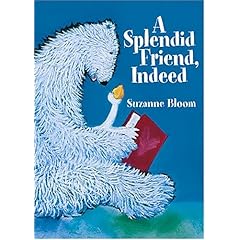I have never heard anyone with an opinion on the matter take my view when comparing these famous cartoons with the “originals.”
I think they’re just fine.
Many are too intense for young children, and I don’t let my kids see those, but that’s because their source material wasn’t cultivated with pre-schoolers in mind. And, yes, I know (perhaps better than many), how far some movies deviate from their stories of origin.
But as stories they are perfectly valid.
The things people complain about: the “weak” role models, the watering down of intense or bloody moments (Hi, you want more violence?), or the “changing” of endings or motivations; these are all things that shouldn’t (in themselves) bother you if they aren’t the only tales you’re consuming.
~
Most of my reason for defending the cartoons isn’t because I like them so much, but because they are merely the next retelling in a centuries-long chain. It has always been the storyteller’s prerogative to take and change and enhance where they find something interesting or perceive a chance to emphasize a message that is important to them.
The difficulty comes when we allow one version to become authoritative.
When my children started treating the Disney Cinderella as “cannon,” I realized I’d neglected their education, and set about rectifying. My girls now proudly own (as in, are familiar with) six versions:
And this has become useful as we interact with peoples of different belief systems. We use it as a contrast between the Bible and “other old stories.” There are (more than!) six different ways to tell “Cinderella,” but there is only one *true* account of Jesus (okay, four, if you want to list Matthew, Mark, Luke, and John), and the Bible is not negotiable.
Stories are good and contain truth, but we can tell them any way we want; we adjust them to suit our preferences. The Bible is Truth, and we adjust our preferences to fit it, not the other way ’round.
~ ~ ~
Marc made an observation about movie adaptations of books that I think is applicable to fairy tales and other stories as well: “Admittedly ego-centric” as the idea is, we approve or call a variant good if we like it.
That simple.
Many fairy tales (Disneyized or not) are rejected outright by some people because those people dislike a message they perceive.
Some tales come down to a surrender of the will to *other,* and even more emphasize a dependence on the help of *other* that many modern minds wish to reject. The insufficiency of self is a scary reality that many who scorn “happily ever after” also reject.
The next time you hear a woman castigated as “weak,” evaluate whether it’s because she is actively incompetent or merely subject to the limitations of individuality that the rest of us are.
Can you hear a personal pet-peeve coming out?
I will admit by their very pervasiveness the Disney version of some stories do feel a bit threatening at times, but on that level I don’t feel they’re very much different from Rugrats or Sponge Bob in popular culture: Yes, it’s frustrating, and I use my influence to shape my children’s perception of them, but so far I can still say I’d rather America’s children have Disney fairy tales then none at all.
For centuries these tales have been basic education about good and evil:
- That good is beautiful (even if the reverse is not necessarily true)
- That evil is to be resisted, even when it’s scary, or painful
- That resistance may have to begin alone, but one is never expected to triumph without some kind of help
- That help always comes
Especially for those individuals who don’t yet have the truth of the gospel, these “lighter shadows among the shade” have the potential both to help develop a conscience and (at times) to point seekers to the deeper truths the stories hint at.
 First,
First,  Second is the potentially-disturbing
Second is the potentially-disturbing